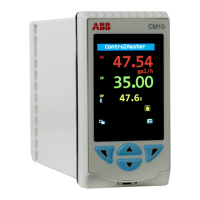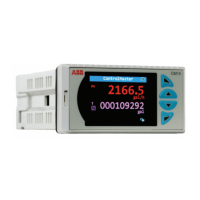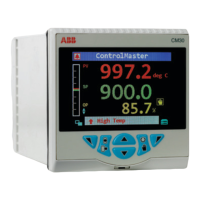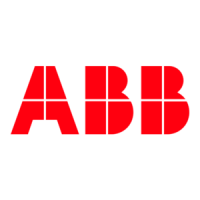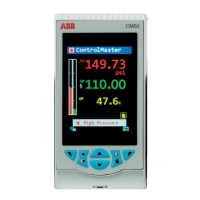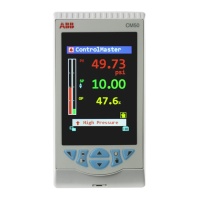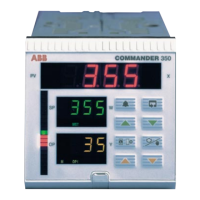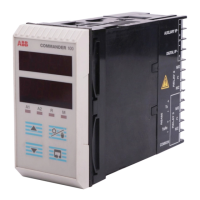ControlMaster CM30, CM50 and CMF310
Universal process controllers,
1
/4,
1
/2 DIN and fieldmount 7 Advanced Level
IM/CM/ED–EN Rev. X 51
…Control / …Loop 1 (2) Control / …Gain Scheduling
Mode Turns the gain scheduling function On or Off.
Source The Gain Scheduling (GSRef) reference signal – see Appendix A, page 104 for description of
sources.
Limit 1 (2) Limit 1 – sets the point where the gain scheduler switches between the first and second sets
of PID parameters.
Limit 2 – sets the point where the gain scheduler switches between the second and third
sets of PID parameters
Reset If the gain scheduler is reset, the next time Autotune (see page 29) is used all 3 sets of the
PID parameters are set – see page 30.
FeedForward
FeedForward can be used to eliminate disturbances that can be measured before they affect the process variable.
Feedforward Adaptive Gain or Static Gain can be used to eliminate these measurable disturbances – see below.
Note. FeedForward is enabled only if a FeedForward application template is enabled – see Section 8, page 88 for
template options.
Calculating Static Gain
If the parameter mode is set to Static Gain (see page 52) the gain value can be determined using the following
procedure:
1 Disable the FeedForward function by setting Mode to Off – see page 52.
2 Bring the system to a steady state.
3 Take note of the values of the disturbance variable (see DV, above) and the Controller output (identify them as v1
and u1 respectively).
4 Introduce a process disturbance, for example, by changing the process load, and then wait until the system is in a
steady state.
5 Take note of the values of the Disturbance Variable and the Controller output (identify them as v2 and u2
respectively).
6 Use the following formula below to calculate the value of the Static Gain parameter:
7 Enable the FeedForward function by setting Mode to Static Gain – see page 52.
PV
FeedForward
Process
SPT
PID
Disturbance Variable (DV)
UPID
UFF = DV x Gain
Controller O/P
U = U
PID + UFF
